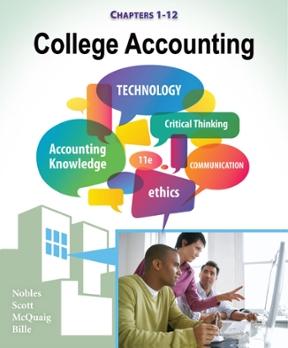Question
11. Fiscal Policy (It's about spending and taxes!) Fiscal Policy Type: Expansionary Policy Contractionary Policy Purpose: End Recession by Increasing Demand Control Inflation by Reducing
11. Fiscal Policy (It's about spending and taxes!)
Fiscal Policy Type: | Expansionary Policy | Contractionary Policy |
Purpose: | End Recession by Increasing Demand | Control Inflation by Reducing Demand |
Government Spending | Increase | Decrease |
Taxes | Decrease | Increase |
| Spillover Effect (result) | Budget Deficit | Budget Surplus |
Information:
Unemployment Rates should be around 4% or less.
Inflation Rates should be between 2 - 4%
A Steady GDP Growth Rate is usually around 4%.
In the situations presented below, you must decide whether the appropriate fiscal policy response is expansionary (E) help the economy to grow, contractionary (C) slow down the economy, or no change (NC).
1. The economy is suffering from its worst slowdown in 30 years.
2. The annual inflation rate is slowing and now stands at 2.5%.
3. We have some good news and some bad news: The unemployment rate has fallen to the lowest level in a decade, 2.3%. But inflation has risen to 8%
4. The unemployment rate remains steady at 11%
5. The annual inflation rate is 8.5% and rising.
12. Automatic Stabilizers Automatic stabilizers are fiscal policies that raise or lower government revenues ($)and taxes in ways that generally reduce either unemployment or inflation, but without requiring Congress or the President to pass any new laws or take any other actions.
Review the list of programs below and check (Y) in the blank before each of the policies that you believe are automatic stabilizers, because they change revenues or taxes in an appropriate way to reduce unemployment when inflation is low, or reduce inflation when unemployment is low. Put an (X) in the blanks for all of the policies that you believe are not automatic stabilizers.
1. Federal taxes on corporate profits
2. Unemployment compensation programs
3. National defense spending on the military
4. Welfare programs for the poor
5. Education programs for colleges and universities
6. Social Security payments for retired workers
7. The federal personal income tax
Step by Step Solution
There are 3 Steps involved in it
Step: 1

Get Instant Access to Expert-Tailored Solutions
See step-by-step solutions with expert insights and AI powered tools for academic success
Step: 2

Step: 3

Ace Your Homework with AI
Get the answers you need in no time with our AI-driven, step-by-step assistance
Get Started


